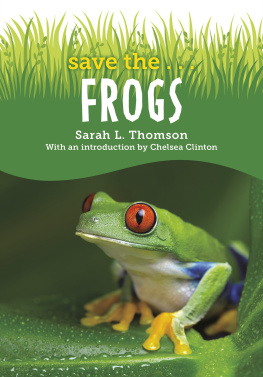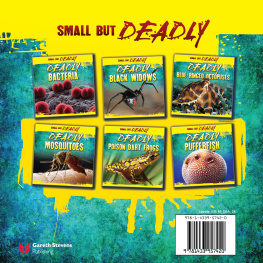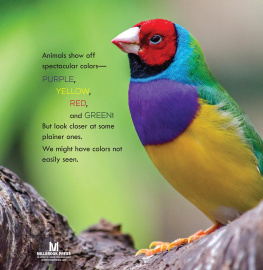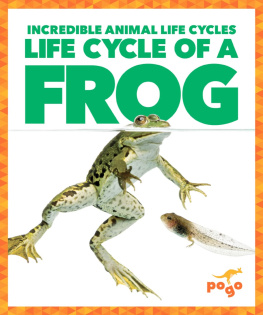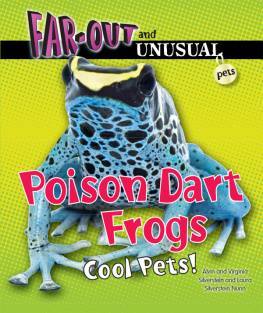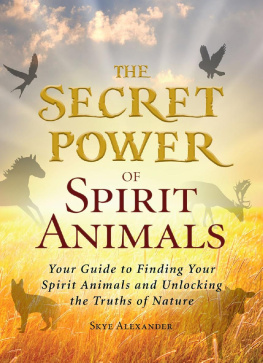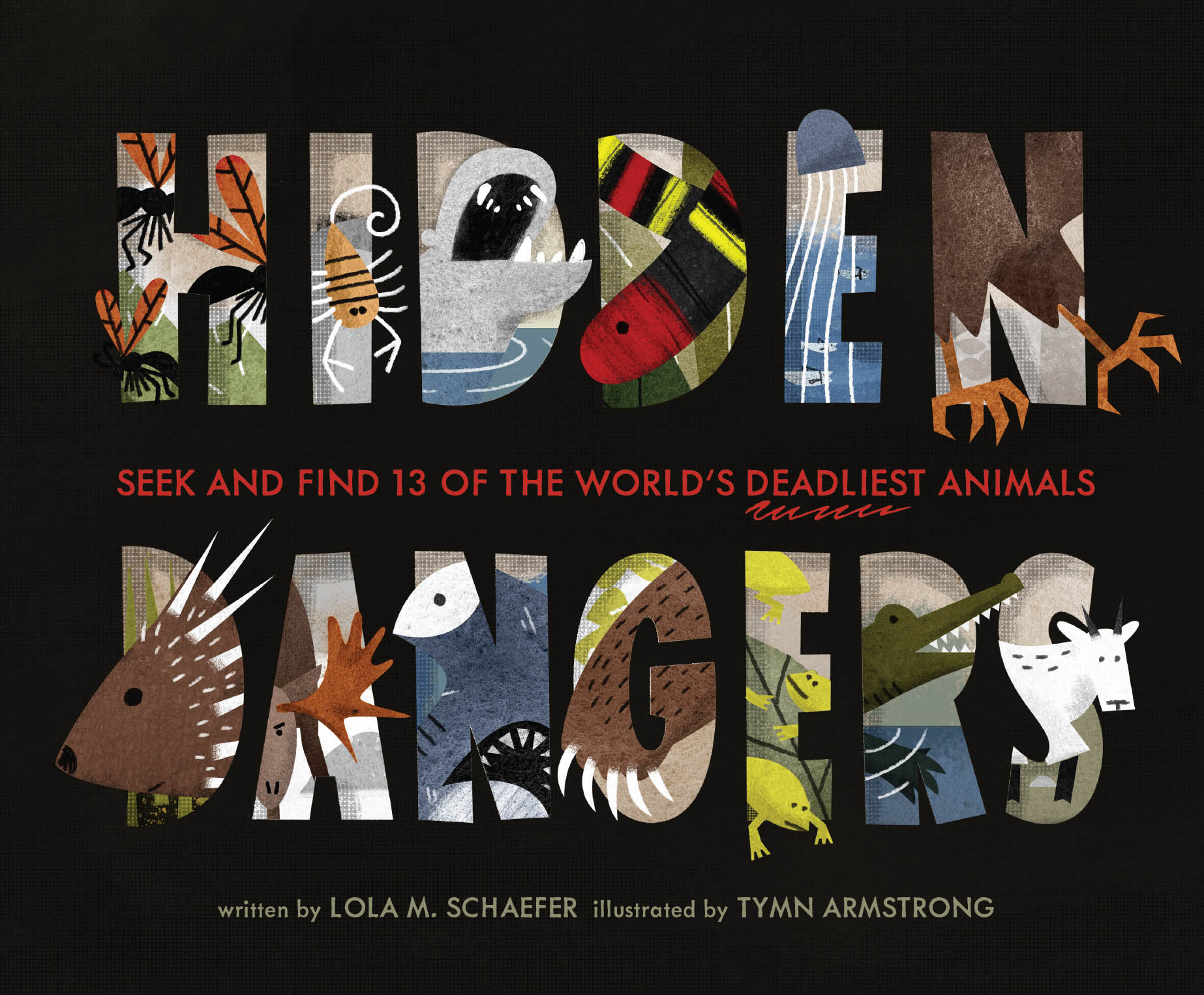

For my father, R. L. Bennett, who taught me to respect animals in the wild
L. M. S.
For Nova
T. A.
Text copyright 2017 by Lola M. Schaefer.
Illustrations copyright 2017 by Tymn Armstrong.
All rights reserved. No part of this book may be reproduced in any form without written permission from the publisher.
Library of Congress Cataloging-in-Publication Data: Schaefer, Lola M., 1950- | Armstrong, Tymn, illustrator.
Hidden dangers : seek and find 13 of the worlds deadliest animals / by Lola M. Schaefer ; illustrated by Tymn Armstrong.
Description: San Francisco, California : Chronicle Books, LLC, [2017]
Audience: Age 5-8. | Audience: K to grade 3.
Identifiers: LCCN 2016002186
Subjects: LCSH: Dangerous animalsJuvenile literature.
Classification: LCC QL100 .S33 2017 | DDC 591.6/5dc23 LC record available at http://lccn.loc.gov/2016002186
ISBN 978-1-4521-3429-1 (hc)
ISBN 978-1-4521-4634-8 (epub, mobi)
Design by Amelia Mack and Tymn Armstrong.
Typeset in Metallophile.
The illustrations in this book were rendered digitally.
Chronicle Books LLC
680 Second Street
San Francisco, California 94107
www.chroniclekids.com

CAUTION
Like us, animals try to avoid danger. But if someone or something invades their territories or startles them, theyll use defense mechanisms to protect themselves. In some cases, that defense is nothing more than a harsh sting. Other times, it may be venomous tentacles, barbed quills, or poison-oozing skin.
Just like in the real world, you may not see all of the animals in this book at first glance. Take a few moments. Look under leaves, in the waves, or on a mountain ledge to find all of the creatures. SOMETIMES DANGER IS RIGHT IN FRONT OF YOU.
HOW MANY DEADLY ANIMALS ARE THERE?
Answers to the seek and find are on the .

Falling off a mountain with a deep, bleeding wound WILL KILL YOU! See that MOUNTAIN GOAT standing on the log? Look at those horns! Theyre sharp enough to rip skin and cut through flesh. Being rammed with those horns is brutal, or DEADLY. If you, or any other animal, intrude on a mountain goats territory, its going to defend itself with a good butt of its horns. If the goring doesnt cause a serious injury, and it usually does, falling down the face of a mountain will.
A mountain goat only protects itself if it feels TRAPPED or THREATENED. So always hike with friends or a guide, and stay on the marked trails. If a mountain goat should cross your path, remain calm. Hold still and study the trail behind you. Take a dozen slow steps backward, then turn and enjoy the return hike.

Want to be DEAD IN JUST TWO MINUTES? No? Then dont touch the bright, glistening skin on that frog. Most rainforest plants and animals will never hurt you, but the GOLDEN POISON DART FROG s skin is covered in a TOXIN that immediately attacks the nervous system of its enemies. If you touch this creature, the poison can numb your skin, your hand, and maybe your whole arm. If you accidentally get a drop or two of the toxin in your eyes, mouth, or an open sore, it will paralyze your lungs and stop your heart. You will be dead in minutes!
But this doesnt have to happen to you. When exploring, if you come close to a golden poison dart frog, STOP. Admire its tiny size and bright color, but remember that its skin is coated with enough poison to kill 8 to 20 people. Then, turn and walk away. The frog will not follow you, and you will have just seen the animal with THE MOST DEADLY TOXIN IN THE WORLD.

PRICKLY, PIERCING QUILLS jab skin! OUCH! The NORTH AMERICAN PORCUPINE is covered in 25,000 to 30,000 quills. If you approach one, it might rattle its quills as a warning. If you come closer, the porcupine will turn its back and push its quills to stand straight. Then it will STRIKE with its tail, ramming its quills into you. Your body heat will make the layers of tiny barbs on the tips of the quills expand, holding the quills in place. You may need pliers to pull them out!
When hiking through the woods or near a forest, keep an eye out for porcupines. They are mostly nocturnal, so if you hike at night, make sure you have a flashlight. Porcupines are slow-moving animals and will not attack unless you get too close or startle them. They only use their quills to defend themselves. If a porcupine crosses your path, BACK AWAY! Then, turn around and get out of there!

Dont crowd a shark. A GREAT HAMMERHEAD , like some other sharks, will defend its territory if threatened. WITH ITS TEETH. If one of these 500- to 1,000-pound (227- to 454-kilogram) creatures confuses you with an enemy or a tasty fish, swim... and swim fast! The hammerhead will strike with its head and bludgeon you again and again until you are weak and weary. Then it will open its powerful jaws and shred you with its serrated teeth. YOU WILL BE DEAD.
Some sharks, even hammerheads, occasionally come close to beaches. To avoid meeting one head-to-head, swim and boogie board with friends or family close to shore. If you are in the water and you see a dorsal fin or a shark head coming your way, remain calm. Yell HELP loudly two or three times. Walk or swim quickly to the beach or the nearest boat ladder. Your life depends on it!

WATCH OUT! A DEATHSTALKER SCORPION has its tail lifted over its head. That tail is SHARP, PAINFUL, and ready to STING, sending VENOM into its victim. Many scorpions live in warm, dry climates such as deserts or tropical grasslands. If you alarm or threaten one, it will raise its tail, jab its telson into you, and release venom into your body. This sting can cause many different reactions, including intense pain, swelling of the skin, numbness, and in some cases... DEATH.
Since scorpions are nocturnal and hide during the day, its almost impossible to see them. Always examine a site well before setting up a tent or sitting on the ground. Rake away any loose bark, grass, or pebbles. If you do see a scorpion, DONT PANIC. Just get away! If a scorpion crawls on your clothing or skin, shake it off. Dont swat it. If you ever get stung by a scorpion, treat it like a bee or wasp sting and immediately visit a doctor.
Next page

